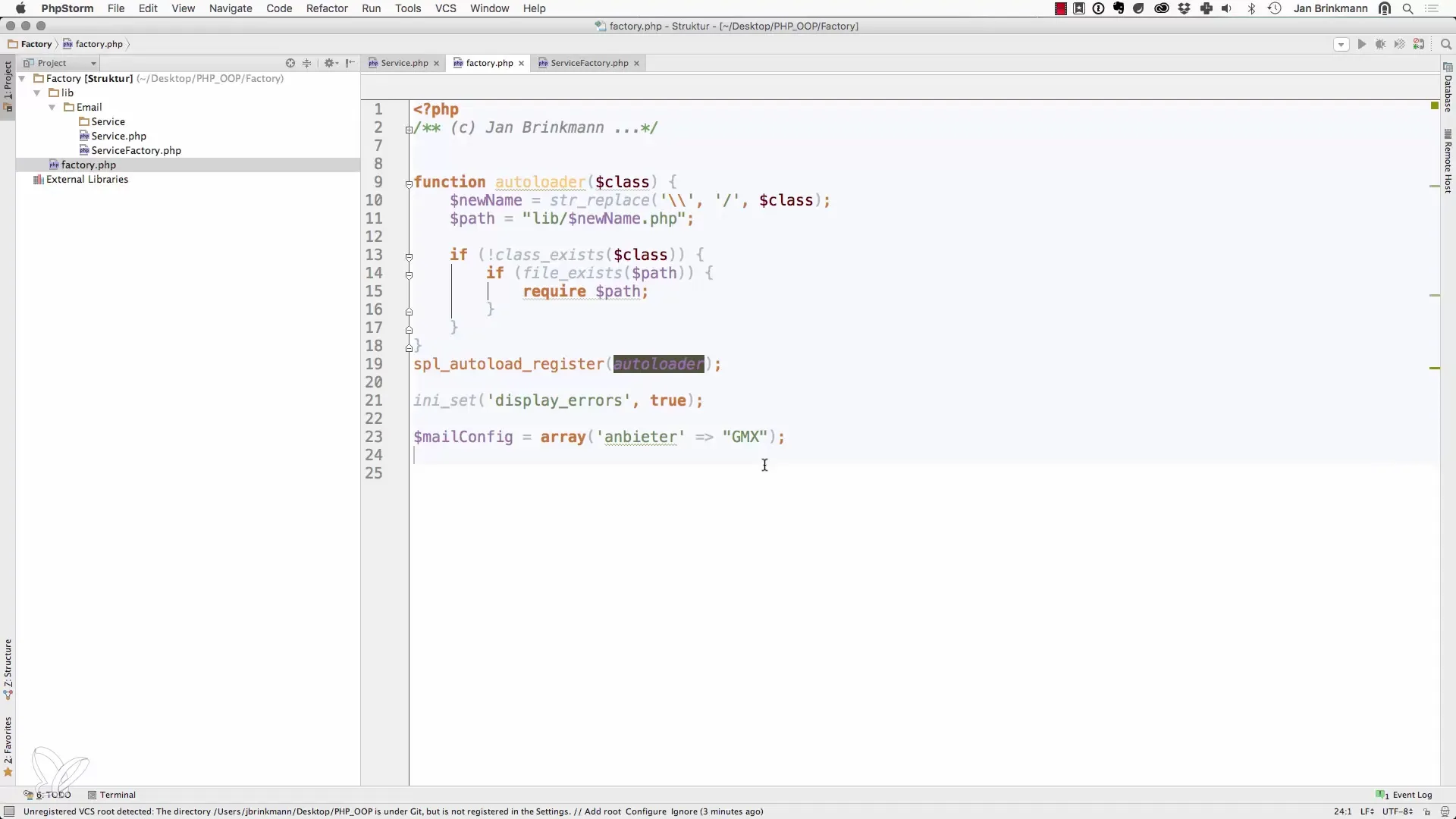The creation of objects in an efficient manner is central to software development. A proven pattern for this is the Factory-Pattern. It not only helps to structure the code but also minimizes dependencies between classes and centralizes the instantiation of objects. In this guide, you will learn how to implement the Factory Pattern in PHP to manage email services.
Key Insights
- The Factory Pattern minimizes dependencies between classes.
- Central instantiation of objects makes the code more maintainable.
- Dynamic adjustments can be implemented more easily without having to review the entire code.
Step-by-Step Guide
Step 1: Definition of Requirements
First, we define the requirements for our E-mail system. We want to support multiple providers, such as GMX and Gmail. Each provider may require specific settings and authentication procedures. Instead of using the specific class with each instantiation, we use a factory.

Step 2: Creating the Interface
We start by creating an interface for the email services. This interface will define the method send that all service providers must implement. This ensures that all providers offer a uniform interface.
Step 3: Implementation of the ServiceFactory
The next step is implementing the ServiceFactory. In this class, we create a static method create that takes the provider as a parameter. Based on this parameter, we determine which specific class should be instantiated.
Step 4: Dynamic Class Creation
Now we come to the dynamic creation of the corresponding classes. We use the namespace to correctly reference the class in the factory. It is important to escape the backslashes properly. This is done by adding double backslashes.
Step 5: Creating the Abstract Base Class
We create an abstract class BaseService that contains the central methods and functions required by each provider. This class will ensure that all specific providers implement the send method.
Step 6: Implementation of the Provider Classes
Now we create the different provider classes like Gmail and GMX, which are derived from BaseService. Each of these classes implements the method deliver, which is actually responsible for sending the email.
Step 7: Testing and Validation
Once all classes have been implemented, we test our system by sending an email through each provider. We simulate both GMX and Gmail. The outputs should clearly indicate, according to the respective provider, from which service the email was sent.
Step 8: Flexibility of Adjustments
An important advantage of the Factory Pattern becomes evident when requirements change. For example, if we want to add another email provider, we do not have to search the entire code, but only adjust the ServiceFactory.
Step 9: Best Practices and Maintainability
In conclusion, best practices and maintainability of the code are discussed. You should be aware of when it makes sense to use the Factory Pattern — particularly with frequently used classes that are instantiated in multiple places.
Summary – Implementing the Factory Pattern in PHP
Throughout this guide, you have learned how to implement the Factory Pattern in PHP. By using a factory, dependencies can be minimized and the code made more maintainable, which is particularly advantageous for intuitive changes.
Frequently Asked Questions
How does the Factory Pattern work in PHP?The Factory Pattern creates objects through a central method, thus minimizing dependencies between classes.
When should I use the Factory Pattern?The Factory Pattern is sensible when a class is instantiated frequently and its implementation may change.
Can I add additional providers to my email system?Yes, you can easily add new providers by simply creating new classes for those providers and adjusting the ServiceFactory accordingly.


